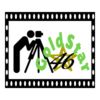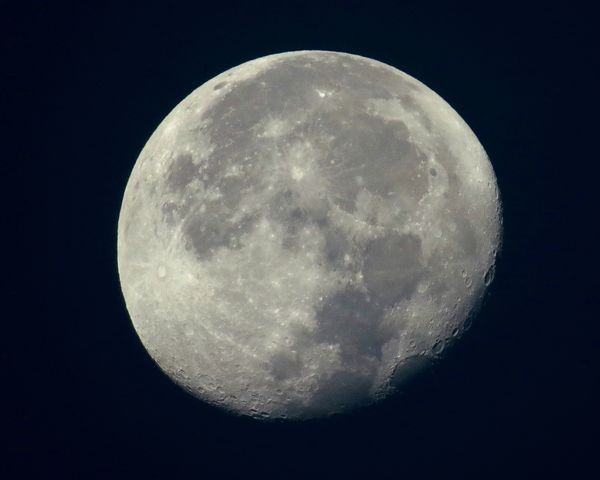focusing on the moon
Aug 6, 2020 09:17:02 #
Sidwalkastronomy
Loc: New Jersey Shore
please remember the full moon is like taking a photo at noon here on earth. Think of geometry sun,earth,moon
Aug 6, 2020 09:49:18 #
.........
The point I am making is that the mask is 'better' than 95% of what everyone else here is suggesting and you can buy for under $20 /
It is a 'solution' and it does work........ DO, you have an expensive scope... He Does NOT and that is NOT what was asked about........
Cheers
GeoVZ
###
The point I am making is that the mask is 'better' than 95% of what everyone else here is suggesting and you can buy for under $20 /
It is a 'solution' and it does work........ DO, you have an expensive scope... He Does NOT and that is NOT what was asked about........
Cheers
GeoVZ
###
Aug 6, 2020 10:02:47 #
Sidwalkastronomy
Loc: New Jersey Shore
reread my post. I clearly stated I had mask for my camera lens. Guess you missed that two times. I do mask my 4 lens but 2 have same filter size. Bought them from OPT Telescope about $15 each
Aug 6, 2020 10:23:02 #
fetzler
Loc: North West PA
bobburk3 wrote:
I have never heard of focus peaking. What is it?
The D7200 does not have this feature as I recall
Many mirrorless cameras have this feature. When something is "in focus" peaking outlines the in focus part with some highlight color.
There are field monitors and Helicon Remote software that will give your camera this feature. you can magnify a small portion of the image in Live View for critical focus.
Aug 6, 2020 10:29:21 #
fetzler
Loc: North West PA
As the moon is in full sunlight use the sunny 16 rule to set your exposure and adjust from there.
Aug 6, 2020 10:44:07 #
If the moon is bright and if the focal length of you lens is long enough, like 400mm or more, you should be able to focus using AF. Or focus the lens manually. And always try and use Live View too. Setting the lens to infinity ahead of time will not work with most modern lenses.
On my D 500 I use a 500mm f5.6 pf lens and a nikon 1.4x tc. On a tripod.
You can set the exposure by using your spot meter. Take a picture and check it out on the LCD. Use exp compensation if needed. Then take some more pictures. I always bracket my exposures even when I think I have gotten it right in the camera.
Since moonlight is reflected sunlight, exposure is usually the same as daylight, or the "sunny 16" rule. I find that the sunny 11 rule is often what is needed: F 11, ISO 400, shutter speed 1/400 or its equivalent. (The shutter speed is the inverse of the ISO.) Make sure the shutter speed is at least 1/30 as the moon is moving.
On my D 500 I use a 500mm f5.6 pf lens and a nikon 1.4x tc. On a tripod.
You can set the exposure by using your spot meter. Take a picture and check it out on the LCD. Use exp compensation if needed. Then take some more pictures. I always bracket my exposures even when I think I have gotten it right in the camera.
Since moonlight is reflected sunlight, exposure is usually the same as daylight, or the "sunny 16" rule. I find that the sunny 11 rule is often what is needed: F 11, ISO 400, shutter speed 1/400 or its equivalent. (The shutter speed is the inverse of the ISO.) Make sure the shutter speed is at least 1/30 as the moon is moving.
Aug 6, 2020 10:54:17 #
bobburk3 wrote:
I have a Nikon D7200. I tried shooting the moon last night using the back screen to focus with a 10X loupe. I think it is called Live View. The moon was so bright I could not see any detail to focus on. In addition, when using the loupe to focus, the texture of the screen is so pronounced, it is difficult to see detail of the subject (even when focusing on other objects besides the moon). I am open to ideas on how to use the back screen to focus.
When shooting the moon, I use full manual operation - shutter speed, aperture, ISO, focus, and camera mounted on a tripod.
An approach that has worked for me is to use Live View, with the 10X focus assist enlargement enabled so I can actually see what I am doing. Most of the time the in-focus indicator will turn to green.
If the moon is high in the sky, black field (no clouds or haze), for exposure I use an EV (exposure value) of 15, or the same as I would use shooting on a hazy sunny day around noon.
EV 15 translates to 1/125 at F16 at ISO 100. You can calculate the equivalent ISO, shutter speed and aperture for your particular situation.
Naturally the amount of moon being illuminated by the sun, sky and weather conditions, and the distance from the horizon are all variables that will affect your exposure settings. For example, a thin crescent moon near the horizon might only have an EV of minus 1.
This is a great guide for exposures of the moon in all of its phases:
http://xjubier.free.fr/en/site_pages/astronomy/MoonExposureCalculator.html
And this explains the whole EV thing:
https://photographylife.com/exposure-value
Here is an example I took on 11/16/16, the Super Moon, in Waning Gibbous phase (94% illuminated by the sun), moon high in a dark clear sky,
D800, Sigma Sport 150-600, 1/200 sec, F8, ISO 100 (a little over EV 14 or so), tripod mounted.
.
Aug 6, 2020 11:55:42 #
Ballard
Loc: Grass Valley, California
bobburk3 wrote:
I have a Nikon D7200. I tried shooting the moon last night using the back screen to focus with a 10X loupe. I think it is called Live View. The moon was so bright I could not see any detail to focus on. In addition, when using the loupe to focus, the texture of the screen is so pronounced, it is difficult to see detail of the subject (even when focusing on other objects besides the moon). I am open to ideas on how to use the back screen to focus.
Auto focus usually works fairly well on the moon, however I find that get the best focus I will connect the camera to a laptop (via USB) and use the live view mode with a 10x digital magnification and manually tweak the focus while watching the image on the laptop screen. This technique works well for stars and planets where autofocus is not an option. On my canon the EOS software provides this functionality, I assume there is something very similar for the Nikon cameras.
Aug 6, 2020 13:01:46 #
JFCoupe
Loc: Kent, Washington
I do not think focus is the key issue here. I suspect you combination of ISO, shutter speed and aperture are at issue. An earlier post with photo listed settings for all three that would be a very good starting point. Take a shot, look at the replay of it and then adjust settings from there.
Good luck with your future efforts.
Good luck with your future efforts.
Aug 6, 2020 14:15:40 #
If the image on the LCD is too bright, changing the aperture won't affect the image, vieewing is done wide open. But reducing the ISO will.
Aug 6, 2020 15:03:04 #
Picture Taker wrote:
I would assume if you go to infinity it will be OK. Or at least close
For practical purposes, that's about where it is!
Aug 6, 2020 15:05:36 #
hj
Loc: Florida
[quote=Bill_de]From "Tips for shooting the moon" from B&H
Guess what? This is usually a part of lunar photography that isn’t challenging at all because the moon is bright and modern autofocus systems should have no problem locking good focus on the moon.
This doesn't speak to the OP's original question but it does suggest there are easy ways to "shoot the moon". I use the K.I.S.S. method and my Canon SX50 bridge camera with TV (shutter speed). Took this just this morning 8/6/20 and cropped on the computer just a little.
Guess what? This is usually a part of lunar photography that isn’t challenging at all because the moon is bright and modern autofocus systems should have no problem locking good focus on the moon.
This doesn't speak to the OP's original question but it does suggest there are easy ways to "shoot the moon". I use the K.I.S.S. method and my Canon SX50 bridge camera with TV (shutter speed). Took this just this morning 8/6/20 and cropped on the computer just a little.
Aug 6, 2020 15:26:06 #
bobburk3 wrote:
I have never heard of focus peaking. What is it?
You can zoom 10x in the LiveView. When I focus on the moon, I have my DSLR camera on a tripod and the display on the backside LCD. I then set a single AF point and zoom the display to the 10x details. Let the AF work from here and you'll get good results. If the lens racks back n forth, try repositioning the AF point to a location with more contrast, maybe the edge of the moon or one of the darker to lighter region changes. I've found the AF to be as good as trying to manual focus.
Aug 6, 2020 16:37:12 #
Full disclosure, I am kind of new to digital. But I found this discussion fascinating because my first and only attempt seemed to go okay despite not knowing any of the tricks here. D7200, 200-500/5.6 racked to 500. AF-C with BBF, aperture preferred, f11, ISO 100, spot meter, SS lands on 1/80. I don't recall if any exposure compensation was used. I likely took a couple shots and took a look; no rush, the subject didn't seem to going anywhere. Not very fast, at least.
Aug 6, 2020 16:41:15 #
I googled to see if your camera supports focus peaking or bracketing (it doesn't) but found this:
https://www.photoartfromscience.com/post/2018/06/15/fake-focus-peak-on-select-nikon-cameras
https://www.photoartfromscience.com/post/2018/06/15/fake-focus-peak-on-select-nikon-cameras
If you want to reply, then register here. Registration is free and your account is created instantly, so you can post right away.







